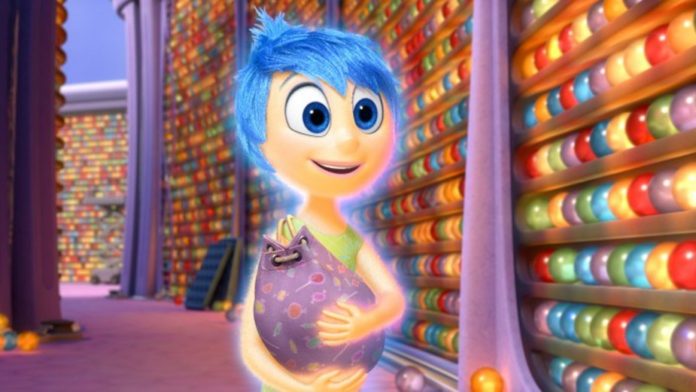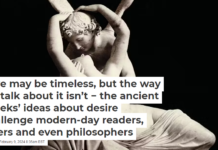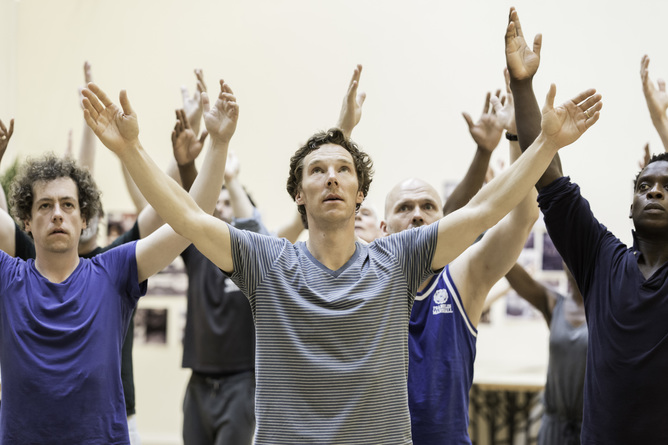
Jennifer Talarico, Lafayette College
Disney/Pixar’s newest film, Inside Out, tells the story of 11-year-old Riley and her difficulty dealing with a family move to San Francisco. The film is getting a lot of attention for its depiction of emotion and memory.
The filmmakers consulted with neuroscientists and psychologists to help make sure they got the science right. As a cognitive psychologist who studies memory, I was excited to see how the film showed the relationship between memory and emotion.
The action primarily takes place within Riley’s mind, with anthropomorphic emotions – Joy, Sadness, Anger, Fear and Disgust – as the main characters. Riley’s mind is shown to be vast, comprising many individual units (Imagination Land and Abstract Thought, for instance). The central location of the story is Headquarters, which corresponds to the current contents of Riley’s consciousness – what she is perceiving from the world around her and what the emotions and other “mind workers” choose to show her in the form of memories or ideas.
In some respects, the movie captures the science behind memory and emotion really well, such as how remembering past events can regulate emotion. Memories allow us to mentally time travel and to relive the past in the present. The character of Joy frequently recalls past memories of pleasant events in order to make Riley happy in the moment.
One recurring plot point is how memories can be changed when they are remembered. In the movie, memories are shown as translucent globes encapsulating events. Each globe takes on a different hue depending on the primary emotion of the event. A golden-hued joyful memory starts to turn blue when held by Sadness, showing the transformation of a previously happy memory to one that becomes bittersweet with the acknowledgment of loss. It’s well-established that the emotional character of events is sometimes altered as we recall them. Although certainly some events become more negative over time (which is depicted in the film), more often memories become more positive in retrospect. This positivity bias in remembering the past has been called the Pollyanna Principle, and it is a normal, healthy aspect of remembering.
The relationship between sleep and memory is also portrayed well. Sleep is presented as a time for moving the day’s memories into long-term storage. We know that sleep is an active part of the consolidation process which makes memories of all types more durable. And, dreams are shown to comprise components of the days’ events, only distorted and with the addition of fantastical and absurd elements. This seems to reflect how our minds consolidate memories and make sense of what we learn.
Inside Out does well when it comes to the interplay of memory and emotion, but the memory basics are a bit misleading.

Puzzle via www.shutterstock.com.
We reconstruct memories when we retrieve them
The film shows memories as stable and complete representations of actual events – something we know is not the case. The events of Riley’s day are automatically “encoded” into a single globe. Each memory globe is “stored” somewhere on a shelf in a vast long-term storage library. Memories are “retrieved” and sent intact and exact, back to Headquarters and, therefore, to consciousness.
That might be a handy visual metaphor for memory, but it’s not actually how memory works. We do encode events from our daily life without a deliberate intention to learn or remember them. For instance, you remember what you had for breakfast today even though you did not have to try to remember that information. But, our brain doesn’t store each memory as an individual whole unit.
Instead scholars believe that the components of events are processed by individual neural modules. Our brain has separate systems for basic cognitive functions: vision, hearing, language, emotion and so on. Visual components are processed by the visual system, auditory components by the auditory system, emotional components by the limbic system. Memories are stored in bits and pieces all over your brain. There is no globe sitting on a shelf that can be retrieved and used to reproduce the event exactly as it happened.
When we retrieve a memory, we reconstruct it from those component pieces. We use the same neural systems that encoded the components to see the event in our mind’s eye, hear it in our mind’s ear and re-experience the emotions associated with the event. That reconstructive process is influenced by what we know about the world around us, our current thoughts and beliefs, and our ongoing goals. So our memories can change over time, just as we do through the years.
In fact, each time we remember an event, we are simultaneously re-encoding that event, making it less likely to be forgotten.
The brain doesn’t discard old memories
Forgetting is another area where the movie represents a common but unsupported theory. The memory globes are shown as becoming less colorful and more dim as they grow older and are not retrieved. They eventually turn dark and gray and are sent to the “memory dump” where they turn to dust and disappear forever. This corresponds to a decay theory of forgetting, which suggests that time leads to permanent loss of information.
But psychologists tend to think of forgetting more as a temporary lapse in memory. There is much research to show that although some information cannot be recalled at will, there is still evidence of prior learning. The information may come to mind with the right reminder, or it may be more quickly recognized, or it may take less time to re-learn that information. Full-fledged memories may fade, but they leave some trace behind.

Books via www.shutterstock.com.
Memories connect to one another
In the film, memories are stored on shelves, each in a single space like books in a library. This doesn’t capture how interconnected our memories are. Memories are stored in component parts. Each individual memory shares features with many other memories – such as the processing components that encode each element, the content details like who was there, where the event took place, or when the event occurred, and the abstract themes like spiritual experiences, romantic moments, or professional accomplishments.
The movie tries to capture our ability to identify overarching themes and causal chains among our memories by showing how “core memories” fuel aspects of Riley’s personality, but this serves to emphasize individual memories rather than constellations of interrelated memories. Although we may have specific self-defining memories, these are typically quintessential examples of larger patterns in our lives. Our memory is less like the public library with many books on the shelves and more like Wikipedia with its many linked pages of information.
Overall, the movie does a great job of showing the complexity of the human mind. Even if not all of the details are completely accurate, the metaphors are grounded in a real understanding of psychological science. Yes, it perpetuates some myths about memory, but to be fair, the focus is on feelings, and it conveys the relationship between memory and emotion well. Plus, it’s a fun adventure story with a terrific message that is well worth watching.
![]()
Jennifer Talarico is Associate Professor, Psychology at Lafayette College .
This article was originally published on The Conversation.
Read the original article.




















